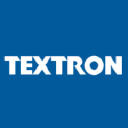Similar companies
Income Statement (CNY)
| Q2 '25 | QoQ | |
|---|---|---|
| Revenue | 147M | 464% |
| Gross Profit | 92M | 465.1% |
| Cost of Revenue | 55M | 462.2% |
| Operating expense | 225M | 112.2% |
| Net Income | -81M | 3.5% |
Balance Sheet (CNY)
| Q2 '25 | QoQ | |
|---|---|---|
| Total Assets | 1.78B | 10.9% |
| Total Liabilities | 766M | 12.9% |
| Total Equity | 1.01B | 9.5% |
| Shares Outstanding | 144M | 300% |
Cash Flow (CNY)
| Q2 '25 | QoQ |
|---|
Financial Highlights for EHang Holdings in Q2 '25
EHang Holdings reported a revenue of 147M, which is a 464% change from the previous quarter. An increase in revenue typically indicates growing demand for the company's products or services. This positive change in revenue is a good sign, suggesting that the company's sales are moving in the right direction.
Gross Profit stood at 92M, marking a 465.1% change since the last quarter. Gross profit showcases the efficiency in production and sales processes.
Cost of Revenue was 55M, a 462.2% difference from the previous quarter. A rising cost of revenue may suggest increased production or sales costs, which can impact margins. However, if accompanied by a proportionate rise in revenue, it could indicate scaling operations.
Operating Expenses for this period were 225M, showing a 112.2% change from the last quarter. Operating expenses cover the costs of running daily business operations. A significant increase might indicate inefficiencies or investments in growth, while a decrease could suggest cost-saving measures or potential underinvestment in key areas.
Net Income for the quarter was -81M, showing a -3.5% change from the prior quarter. Net income provides a clear picture of the company's profitability after all expenses. An increase suggests the company is becoming more profitable, while a decrease may raise concerns about the company's financial health, unless there are specific one-time costs or investments.
EHang Holdings faced some challenges this quarter with a decline in one or more of the key metrics: revenue, gross profit, or net income. Higher operating expenses might indicate increased investments or potential inefficiencies.







